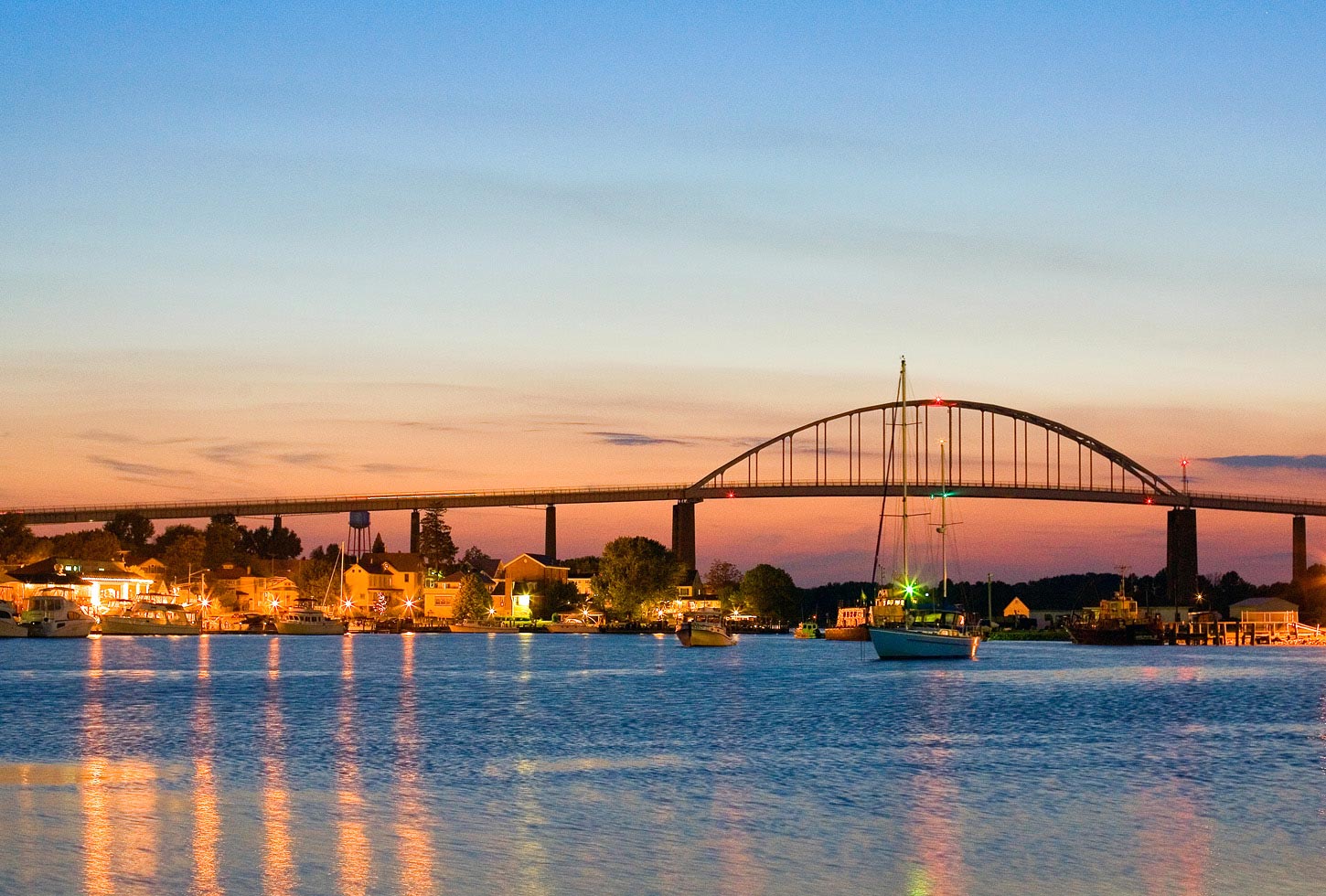
Chesapeake City is currently the only town in Maryland that is situated on a working commercial canal.
As early as the 17th century, local settlers (including the famous surveyor and map maker Augustine Herrman) recognized the possibility of connecting the Chesapeake Bay with the Delaware River. In the mid-1760s, possible canal routes were surveyed along a conceptual route stretching across the Delmarva Peninsula from the headwaters of the Chesapeake Bay to the Delaware River. Not until 1824, after an unsuccessful first start further to the north, did construction begin at the Chesapeake City location.
At its completion in October of 1829, two structures were reported to have been standing in the town (then known as Bohemia Village): a pre-revolutionary building known as Chick’s Tavern House and a lock house for collecting tolls. The town subsequently grew in response to the needs of the canal operations and commerce. In 1839, the town changed its name to Chesapeake City in anticipation of big things to come and incorporated in 1849 when the population reached 400.
In 1927 the canal was made sea level, and a new, vertical lift bridge was constructed to span the waterway linking the end of George Street to the North side of Chesapeake City. The bridge was used until 28 July 1942 when it was struck by a tanker, the “Franz Klasen”, completely destroying it. The current suspension arch bridge was completed in 1949.
Chesapeake City’s historic area is on the National Historic Registry, as well as Maryland’s Historic Registry. The town has many restored historic homes, shops and galleries, featuring hand-painted originals and prints, antiques, collectibles, clothing, gifts and crafts. Chesapeake City’s Victorian charm has been featured in several national magazines, including Travel & Leisure, Coastal Living and Southern Living. Convenient to several large cities on the east coast, this historic village on the banks of the C&D Canal is a favorite spot for those seeking a weekend getaway or a vacation retreat.